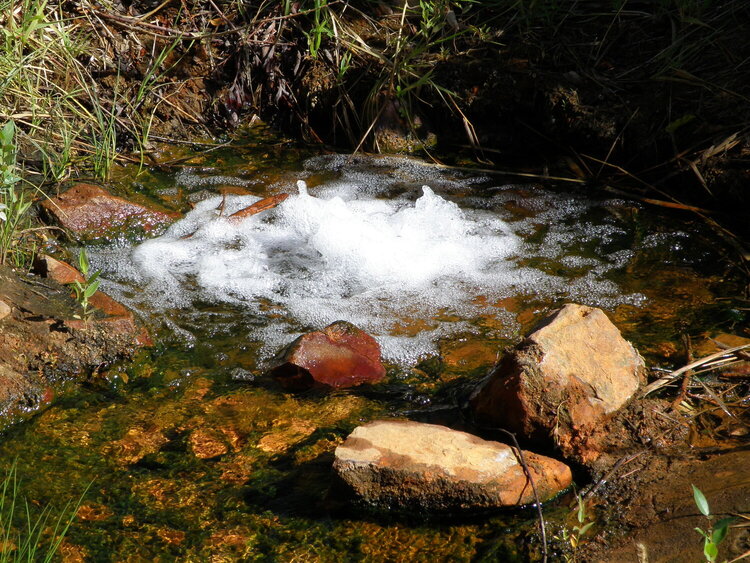Plus, a FREE Gift! | Details Here.


 Give a Cheer
Give a Cheer
9-21-10...A bubbling, carbonated mineral springs on Hwy 142 near the Gas-Ice plant. The water tastes like seltzer or soda water. [P9216654]
~~~~~~~~~~~~~~~~~~~~~~~~~~~~~~~~~~~~~~
Klickitat Mineral Springs History
By Barbara Robinson
For several miles north of the present town of Klickitat, naturally carbonated mineral water bubbles to the earth's surface. Members of the Klickitat tribe knew about and used the bubbly water from these springs for healing and sweat lodge ceremonies. Early pioneer settlers also drank and bathed in the bubbly waters for their health.
Mineral Springs Spa, constructed in 1890, was the first attempt to turn a profit from the carbonated mineral springs. Another health resort opened in 1902, but neither business lasted long. In 1908, the Klickitat Mineral Springs soft drink bottling plant opened, where sugar syrups were added to the naturally carbonated water to create different flavored drinks. The water was sold in the Northwest under various names such as “Klickitat Mineral Water,” “Klickitat Pop,” “Merry Mix,” “Whistle,” and “Mineral Ale.”
The Lyle-Goldendale Railroad, built in 1902, took the bottled “Klickitat Pop” to market. (That railbed is now the Klickitat Trail.) In the early Klickitat County days, there were no roads connecting Klickitat to Lyle or Goldendale. The curative properties of the mineral water were widely known, and for years the train would stop at Klickitat and let people off so they could take a drink from the spring nearby.
The train stop at Klickitat was originally known as “Wrights,” after the first settler family in the area. When “Klickitat Pop” became well known around 1909, the railroad took a “Klickitat” sign that had been at river mile 7.2 and put it up at the present town of Klickitat, and took the “Wrights” sign and put it at mile 7.2. That is how the town of Klickitat got its name.
In 1928, Warren Langdon bought the business and built a larger bottling plant where the stucco building is now located. His success was marked by a contract with Safeway. Unfortunately, the beverage did not hold its fizz on the store shelf, and when the Great Depression hit, the business failed. In 1931, R. B. Newbern, an expert on gases, wanted to use the very pure carbon dioxide gas responsible for the water's bubbles for something else: dry ice. Dry ice is solid carbon dioxide, and it was a new commercial product in the early 1930s.
Over the next four years, Newbern spent $200,000 to construct a dry ice plant. Newbern's Ice Plant included equipment and buildings on both sides of the Klickitat River with a bridge over the river connecting the operation. The business thrived, particularly during WWII. Among other uses, carbon dioxide was used for inflating lifeboats, preserving food sent to troops, and preventing gasoline fumes from exploding in gas tanks. The dry ice business continued successfully at this location until 1957, when the plant was moved to Kennewick, Washington.
The Washington Department of Fish and Wildlife has since acquired the land and removed all but one of the ice plant buildings. Two women in Klickitat had observed huge numbers of “swallows” — actually Vaux's Swifts — using the chimney of the ice plant building as a night roost in spring and summer, and its preservation became a local cause.
Barbara Robinson is the Klickitat Trail, Conservancy Vice President.
Sources: “So This Is Klickitat,” Selma M. Neils, 1967; “Klickitat Mineral Springs,” Tal Bratton and Joy Bratton Cook (Klickitat Heritage); “New Industry Born of Bubbling CO2,” H. Gardner Peterson
INFORMATION copied from: www.walkaboutmag.com
No products have been added to this project.
Thanks for spreading positivity!
October 06, 2010
September 27, 2010
September 25, 2010
September 24, 2010
September 24, 2010
September 24, 2010
September 24, 2010
September 23, 2010
September 23, 2010
September 23, 2010